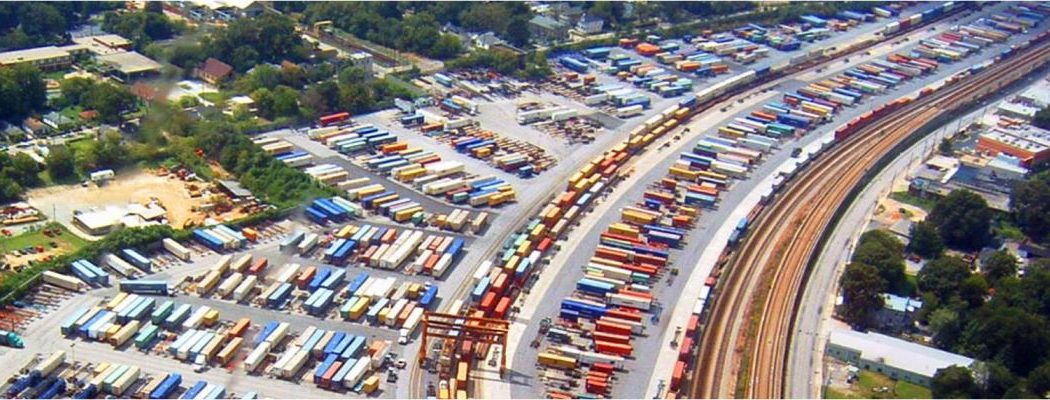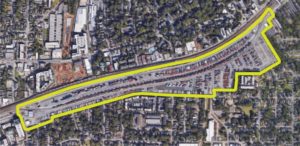For about four decades, the Hulsey train yard just east of downtown Atlanta, Georgia bustled with activity nearly 24 hours a day.
But in the first week of May, 2019, the yard suddenly grew silent. Owner CSX closed the 70-acre facility, shifting freight traffic to a facility in south Fulton County, according to a report in the Atlanta Journal-Constitution.
While CSX hasn’t yet said whether it will sell the property, the prospect of redevelopment has people talking, and dreaming big. After all, it’s a prime location: bookended by two MARTA stations, bisected by the Atlanta BeltLine trail, and wedged between some of the most desirable in-town neighborhoods.
The Atlanta Regional Commission reached out to a few key stakeholders and community leaders to get their take on what should—and should not—happen to this key piece of real estate:
Ryan Gravel, founder and president of Sixpitch, an urban design consultancy, and BeltLine visionary, said “I’ve seen all kinds of proposals for Hulsey Yard over the years. Whatever happens with site development and greenspace, the most important thing is that it includes the Atlanta BeltLine transit and trail.”“From the north, we’ve always planned for a new tunnel that is parallel to Krog Street but about a block to the west that connects to a green guideway all the way down the yard to the MARTA station on the Reynoldstown side, then doubles back south into the neighborhood at Wylie and Flat Shoals. This essential connection – especially for transit – makes the true dream of the BeltLine possible all up and down the eastside,” he added.
Odetta MacLeish-White, managing director of the TransFormation Alliance, said “Once again, Atlanta finds itself with an opportunity to envision the redevelopment of a catalytic piece of land. The question is, will the process follow old Atlanta ways or will we pioneer new Atlanta ways?”
“The combined creativity of this city’s residents and leadership could bring about a project that serves everyone, and not just a few who already have more than enough. Think how exciting it would be if the City’s Offices of Resilience, Cultural Affairs, and One Atlanta came together to design a visioning process that centered the voices and needs of legacy residents, prepared for the arrival of new neighbors, and demanded that the profits that will inevitably come from redeveloping Hulsey Yards show up in the form of jobs, contracts, and resources for the whole city? That would be Beloved Community,” she continued.
Eric Kronberg with Kronberg Wall, an architecture firm in Reynoldstown, whose offices are adjacent to Hulsey Yard, said “I strongly believe there is a moral, social, and ecological basis for a significant amount of redevelopment at Hulsey Yard. My belief comes from the importance of considering transportation costs as part of our affordability conversations in Atlanta. Having direct access to a heavy rail transit station greatly increases the moral need for development at this site,“.
He added, “From a city connectivity standpoint, providing protected space for pedestrians, cyclists, scooterists, light rail, and maybe (maybe) another route for automobiles to access DeKalb Ave is critical. The development should be parking lite, with high priority on alternative modes of transportation. From a density standpoint, respect the constraints of the Cabbagetown historic district. I think 2-4 stories of height for buildings directly facing Wylie is reasonable and appropriate. For everything else not directly facing Wylie, I think taller and higher density should be a critical goal.”
Christopher Leerssen, chair of Neighborhood Planning Unit N, which includes Hulsey Yard and surrounding neighborhoods made this suggestion: “Re-stitch our historic grid of streets, carefully. This ensures development can change and modify in a finer-grained way over time. It promotes slower vehicular traffic and aids non-motorized modes. It helps prevent ugly parking lots and ungainly super blocks. Speaking of parking, we need really low parking ratios – in exchange for transit-oriented (a.k.a. higher) densities. A new MARTA station near Krog Street would be a massive boon for MARTA, the development, the neighborhoods, and for the BeltLine. The distance between King Memorial and Inman/Reynoldstown station is one of the greatest on that line.”
He continued, “The roundhouse that was north of Flat Shoals Avenue was an integral aspect of Atlanta’s history. It needs to be represented in an artful and sweet way. Many people are pushing for a nice-sized greenspace there. At the risk of trying to stuff too many things on a site, we need to strongly consider affordable housing (which the BeltLine overlay is doing as of late), solar power generation, and beautiful stormwater management practices.”
Sam Shenbaga, Community Development Group Manager, Atlanta Regional Commission, said “Potential redevelopment of this property holds enormous opportunity to reconnect neighborhoods that have been divided for decades by the train yard. Because the property is book-ended with MARTA stations on both ends, and with the Atlanta BeltLine in the middle, this holds the potential to be one of the most significant transit oriented development projects in metro Atlanta’s history.”
“It’s critically important for the success any redevelopment effort that it be done in the right way, with appropriate community input, and an understanding of the broader need in our region for greater connectivity and walkability and greater access to transit and affordable housing,” he concluded.
Featured photo of Hulsey Yards courtesy of Atlanta Regional Commission.
This article by Paul Donsky and Kate Sweeney first appeared in What’s Next Atlanta, a publication of the Atlanta Regional Commission. Reprinted (with minor edits) by permission.


